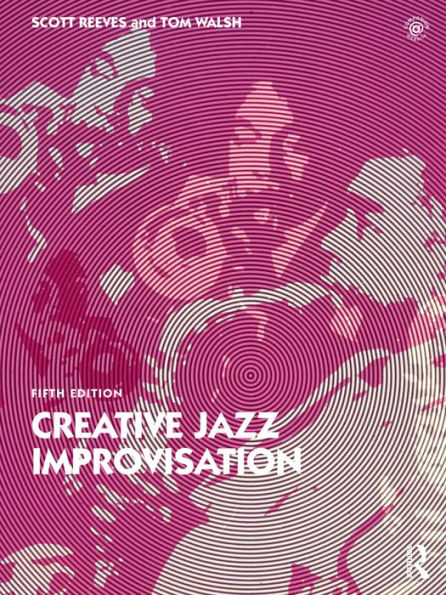The leading textbook in jazz improvisation, Creative Jazz Improvisation, Fifth Edition represents a compendium of knowledge and practice resources for the university classroom, suitable for all musicians looking to develop and sharpen their soloing skills. Logically organized and guided by a philosophy that encourages creativity, this book presents practical advice beyond the theoretical, featuring exercises in twelve keys, ear training and keyboard drills, a comprehensive catalog of relevant songs to learn, and a wide range of solo transcriptions, each transposed for C, Bb, Eb, and bass clef instruments. Chapters highlight discussions of jazz theory - covering topics such as major scale modes, forms, chord substitutions, melodic minor modes, diminished and whole-tone modes, pentatonic scales, intervallic improvisation, free improvisation, and more - while featuring updated content throughout on the nuts and bolts of learning to improvise.
New to the Fifth Edition:
- Co-author Tom Walsh
- Additional solo transcriptions featuring the work of female and Latino jazz artists
- A new chapter, “Odd Meters”
- A robust companion website featuring additional exercises, ear training, play-along tracks, tunes, call and response tracks,
- keyboard voicings, and transcriptions, alongside Spotify and YouTube links to many of the featured solos
Rooted in an understanding that there is no one right way to learn jazz, Creative Jazz Improvisation, Fifth Edition explores the means and methods for developing one’s jazz vocabulary and improvisational techniques.
The leading textbook in jazz improvisation, Creative Jazz Improvisation, Fifth Edition represents a compendium of knowledge and practice resources for the university classroom, suitable for all musicians looking to develop and sharpen their soloing skills. Logically organized and guided by a philosophy that encourages creativity, this book presents practical advice beyond the theoretical, featuring exercises in twelve keys, ear training and keyboard drills, a comprehensive catalog of relevant songs to learn, and a wide range of solo transcriptions, each transposed for C, Bb, Eb, and bass clef instruments. Chapters highlight discussions of jazz theory - covering topics such as major scale modes, forms, chord substitutions, melodic minor modes, diminished and whole-tone modes, pentatonic scales, intervallic improvisation, free improvisation, and more - while featuring updated content throughout on the nuts and bolts of learning to improvise.
New to the Fifth Edition:
- Co-author Tom Walsh
- Additional solo transcriptions featuring the work of female and Latino jazz artists
- A new chapter, “Odd Meters”
- A robust companion website featuring additional exercises, ear training, play-along tracks, tunes, call and response tracks,
- keyboard voicings, and transcriptions, alongside Spotify and YouTube links to many of the featured solos
Rooted in an understanding that there is no one right way to learn jazz, Creative Jazz Improvisation, Fifth Edition explores the means and methods for developing one’s jazz vocabulary and improvisational techniques.

Creative Jazz Improvisation
396
Creative Jazz Improvisation
396Related collections and offers

Product Details
| ISBN-13: | 9781000575590 |
|---|---|
| Publisher: | Taylor & Francis |
| Publication date: | 08/19/2022 |
| Sold by: | Barnes & Noble |
| Format: | eBook |
| Pages: | 396 |
| File size: | 77 MB |
| Note: | This product may take a few minutes to download. |
